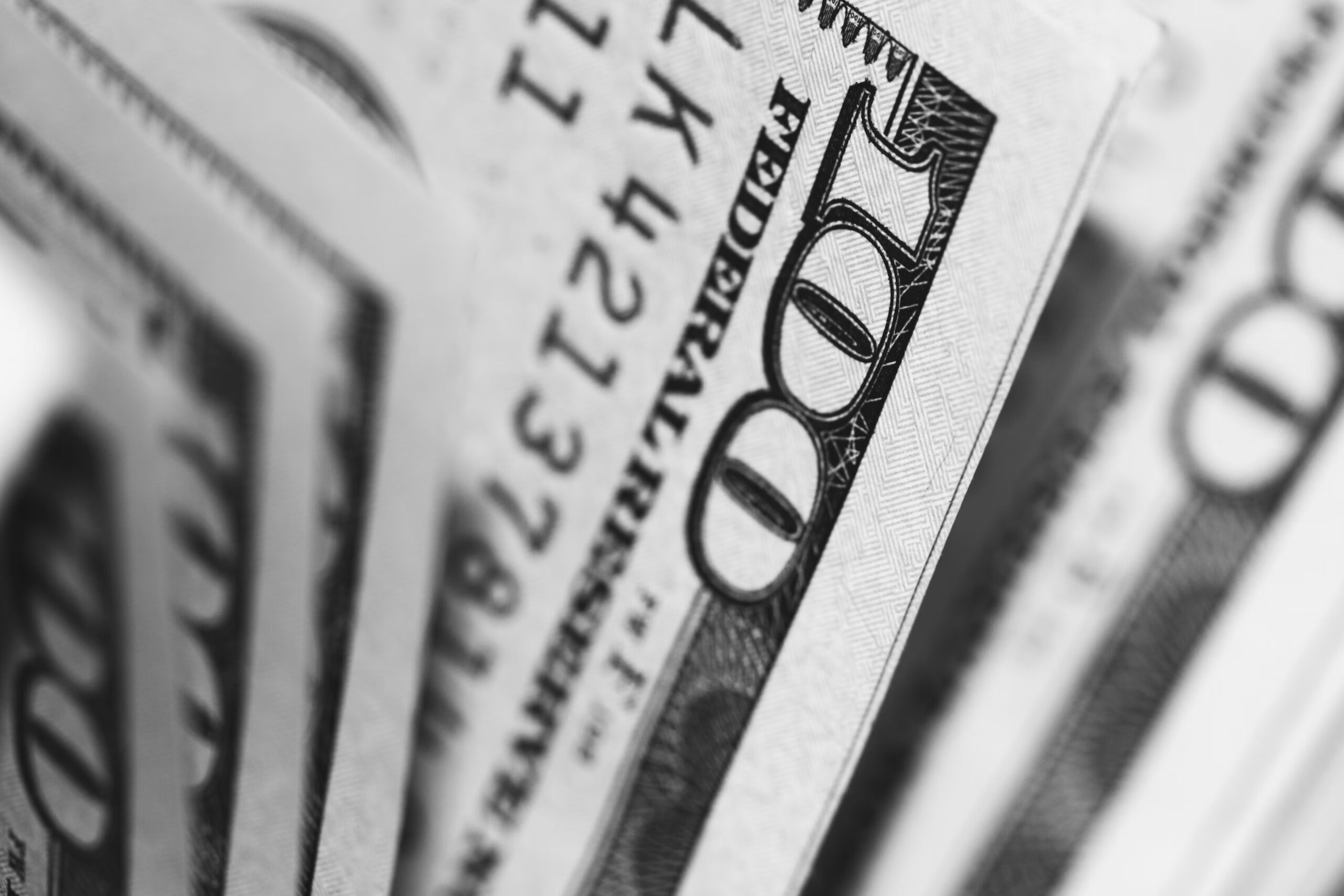“Scratch.
Wampum.
Dough.
Sugar.
Clams.
Loot.
Bills.
Bones.
Bread.
Bucks.
‘That which separates the haves from the have-nots.
But what is money?
It’s everything if you don’t have it, right?
Half of all American adults have more credit card debt than savings. 25% have no savings at all. And only 15% of the population is on track to fund even one year of retirement.
Suggesting what? The middle class is evaporating? Or the American Dream is dead?
You wouldn’t be sitting there listening to me if the latter were true.
You see, I think most people just have a fundamentally flawed view of money.
Is it simply an agreed-upon unit of exchange for goods and services? $3.70 for a gallon of milk? Thirty bucks to cut your grass?
Or, is it an intangible?
Security or happiness – peace of mind.
Let me propose a third option. Money as a measuring device.
You see, the hard reality is how much money we accumulate in life is not a function of who’s president or the economy or bubbles bursting or bad breaks or bosses.
It’s about the American work ethic.
The one that made us the greatest country on Earth.
It’s about bucking the media’s opinion as to what constitutes a good parent. Deciding to miss the ball game, the play, the concert, because you’ve resolved to work and invest in your family’s future. And taking responsibility for the consequences of those actions.
Patience.
Frugality.
Sacrifice.
When you boil it down, what do those three things have in common?
Those are choices.
Money is not peace of mind. Money‘s not happiness.
Money is, at its essence, that measure of a man’s choices.”
[END SCENE]
The previous passage is the opening monologue of Netflix’s smash hit, Ozark. The monologue is masterfully delivered by the character Marty Bird – played by Jason Bateman.
If you haven’t seen Ozark yet, stop what you’re doing and watch it at once.
It’s truly bingworthy.
The short of it is, Marty Bird is a financial adviser who drags his family from Chicago to the Missouri Ozarks, where he must launder $500 million in five years to appease a drug boss.
Interesting, right?!?!
The reason I included it is because it is, in my humble opinion, one of the best monologues I’ve ever heard.
But I have a confession. I’m a little biased as Jason Bateman is one of my all-time favorite actors and money is one of my favorite subjects.
Be that as it may, I still believe it captures the essence of what money is, ‘that measure of a [person’s] choices.”
Over the next few weeks, I’m going to be rolling out a series on side hustles and how to make extra money on the side or from home. I think it would be helpful to review our understanding and assumptions of money.
So let’s get on with it.
Money is a medium of exchange that is widely accepted in transactions for goods and services, as well as for settling debts and other financial obligations. It serves as a unit of account, a store of value, and a standard of deferred payment. Money facilitates economic transactions by simplifying the process of trade and providing a common measure of value.
There are various forms of money throughout history and across different economies, including:
Cash: Physical currency in the form of banknotes and coins issued by a government or central authority. These are tangible and can be used for immediate transactions.
Digital Money: Money stored electronically, such as in bank accounts or digital wallets. This form of money includes checking and savings account balances, as well as digital payment methods like credit cards, debit cards, and mobile payment apps.
Cryptocurrencies: Digital or virtual currencies that use cryptography for security. Bitcoin, Ethereum, and many other cryptocurrencies have gained popularity in recent years as alternative forms of money.
Commodity Money: Money that is backed by a physical commodity with intrinsic value, such as gold or silver. In the past, people used to exchange these commodities directly, but over time, paper notes and coins representing a specific amount of the commodity were introduced.
Fiat Money: Money that has no intrinsic value and is not backed by a physical commodity. Most of the world’s currencies today, such as the US dollar, euro, and yen, are fiat currencies. Their value is based on the trust and confidence of the people who use them, as well as the stability of the government or central authority that issues them.
Money has evolved, with different societies using various forms of currency based on their needs and economic systems. Its primary functions are to facilitate exchange, provide a unit of account, store value, and serve as a standard of deferred payment, which makes it an essential element of modern economies.
As a treat, I’ve included a link to that opening monologue.
Enjoy!

